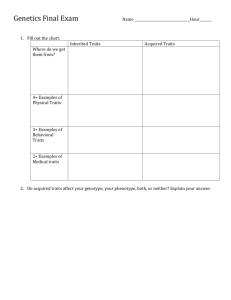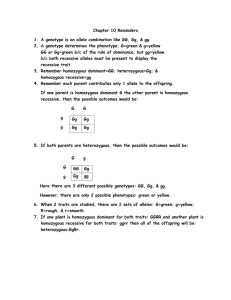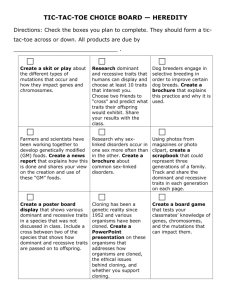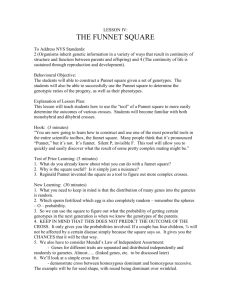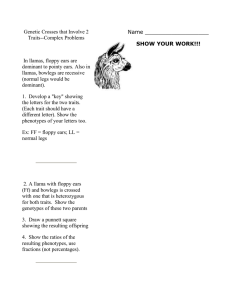Determining Genotypes from Phenotypes Name
advertisement
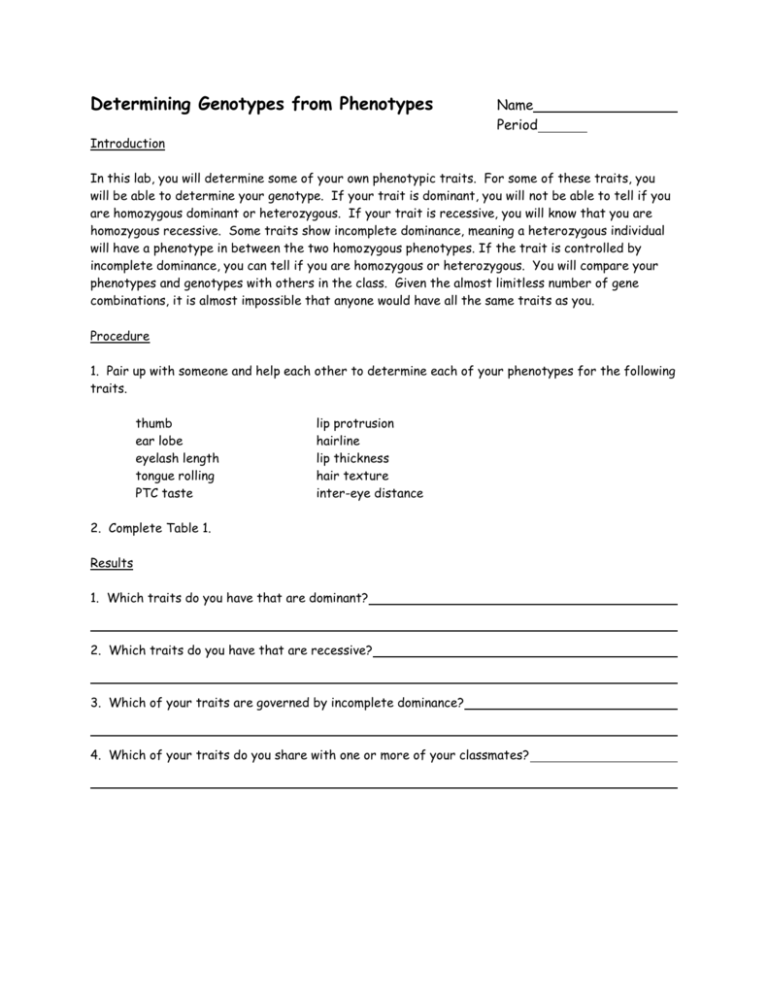
Determining Genotypes from Phenotypes Name Period Introduction In this lab, you will determine some of your own phenotypic traits. For some of these traits, you will be able to determine your genotype. If your trait is dominant, you will not be able to tell if you are homozygous dominant or heterozygous. If your trait is recessive, you will know that you are homozygous recessive. Some traits show incomplete dominance, meaning a heterozygous individual will have a phenotype in between the two homozygous phenotypes. If the trait is controlled by incomplete dominance, you can tell if you are homozygous or heterozygous. You will compare your phenotypes and genotypes with others in the class. Given the almost limitless number of gene combinations, it is almost impossible that anyone would have all the same traits as you. Procedure 1. Pair up with someone and help each other to determine each of your phenotypes for the following traits. thumb ear lobe eyelash length tongue rolling PTC taste lip protrusion hairline lip thickness hair texture inter-eye distance 2. Complete Table 1. Results 1. Which traits do you have that are dominant? 2. Which traits do you have that are recessive? 3. Which of your traits are governed by incomplete dominance? 4. Which of your traits do you share with one or more of your classmates? Table 1. Human Phenotypes and Genotypes Traits Dominant Your Phenotype Recessive Hairline Widow’s peak (WW/Ww) Straight line (ww) Ear Lobe Free (AA/Aa) Eyelash length Tongue dexterity PTC Taste Long (EE/Ee) Attached (aa) Short (ee) Thumb Hitchhiker’s thumb (HH/Hh) Lip Thickness Thick (LL/Ll) Hair texture Curly (HH) Wavy (HS) Inter-eye distance Close together (DD) Protruding (PP) Medium distance (DF) Straight (SS) Far apart (FF) Slightly protruding (PN) Not protruding (NN) Lip protrusion Can roll (RR/Rr) Taster (TT/Tt) Your possible genotypes Unable to roll (rr) Non-taster (tt) Straight thumb Thin (ll) Conclusions 1. What determines your traits? 2. With knowledge of the phenotype of a human, how can a person’s genotype be determined? 3. Does being dominant necessarily mean that an allele is more common in a population? Explain.

